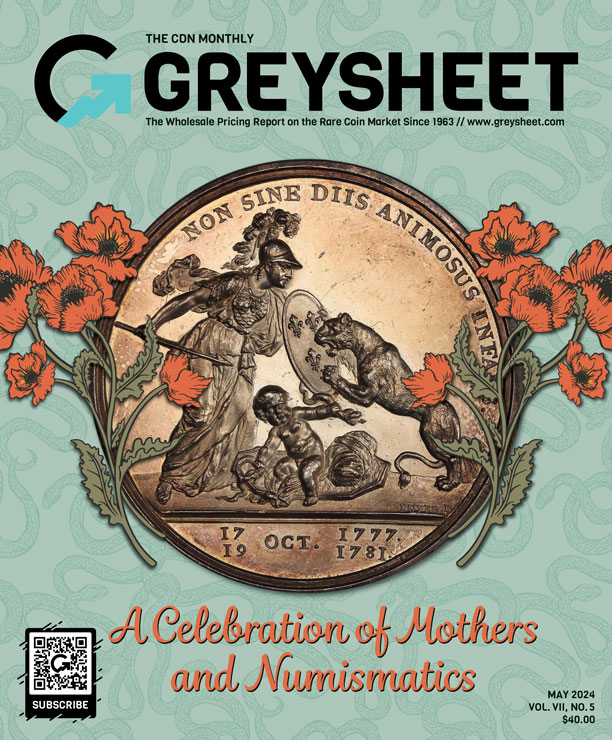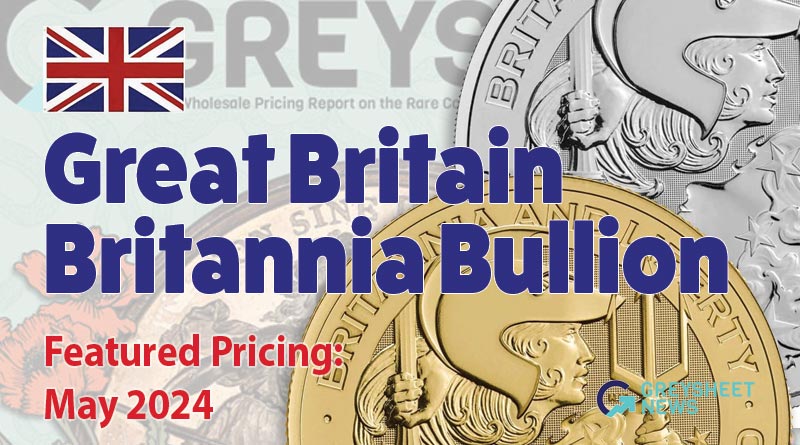Bluesheet: WHAT DOES THE SALES DECLINE AT THE U.S. MINT SALES ACTUALLY MEAN, ANYWAY?
Over the past few months we have dedicated some Bluesheet articles to modern coinage, as we contemplate expanding our listings to include certain series to help dealers and collectors understand the market price differences between coins graded (mint state/proof) 69 and 70. Before a modern issue-bullion piece or commemorative-ends up in a certified holder it starts out as a mint product. Obvious, we know, but we were reminded of this very basic fact in a recent article on this subject by our friend, David Harper, in Numismatic News. According to the 2016 U.S. Mint Annual Report, year-over-year sales of collector coins have fallen 22%, and the Mint’s profit margin was just 8% on a total of $413 million in sales for non-bullion coins. Net profits were down a significant 48%. Of course, the Mint has numerous other sources of income, but if this were any notable publicly-traded company reporting a sales decline of 22% would be major news, and cause for concern. Additionally, running a business on an 8% margin is not healthy, even in the rare coin market where margins are smaller than most other industries.
The U.S. Mint is often referred to as the world’s biggest coin dealer, so what do these figures mean to the wider rare coin market? One could easily infer that a plunge in Mint sales of collector coins signals a contraction of the domestic market, meaning fewer people collecting. As obvious as this
seems, we don’t think this is the case.
One plausible reason for this decline is a matter of cost. Collectors of new issues are extremely sensitive to the Mint’s asking price when compared the face, or intrinsic (metal content), value. A one-ounce Eagle-containing $17 of silver-offered for the premium price of $52 is a tough sell to many collectors, especially as the Mint appears to be tone deaf to complaints from their buyer base about the increasingly broad number of products they offer every year.
While many recent Mint products sell at a premium to their melt value on the secondary market, there are many that do not, and short losses from collectors have begun to impair the “brand” of late. Collectors are wary of the possibility that the premiums over melt can evaporate quickly on resale. The problem is that the Mint does not have much room to lower their prices because of the small margin they are currently operating on. Clearly they will have to look at their own costs of production going forward. The Mint would also do well to be more creative and original with their offerings and improve the quality of their collector products. One does not need look farther the 5-ounce “hockey puck” ATB quarters, or ill-fated First Spouse series, to see that quality is far more important than quantity.
A second reason that declining Mint sales aren’t a major concern for the general numismatic hobby is that the large pool of new collectors in the past two decades-who were attracted by popular modern issues like Statehood quarters-have simply moved backward into vintage coins. Whether they buy from the Mint, eBay or other venues, new collectors often start out with the modern issues but they gravitate backward into classic series, which are more interesting. There is an increasingly immense amount of information now available via books and on the internet,
giving newcomers the confidence to learn and spend more on their hobby.
As a professional dealer, or serious collector, we’d love to know what you think on this matter. Please comment on this article at blog.greysheet.com so we can continue the discussion.

Download the Greysheet app for access to pricing, news, events and your subscriptions.
Subscribe Now.

Subscribe to Monthly Greysheet for the industry's most respected pricing and to read more articles just like this.
Source: CDN Publishing










